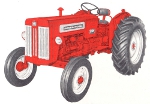A second hand yamaha is imo the best way to go. Good price for what you get out of it. I have tried a bunch of guitars over the years, but yamahas are pretty consistent with bang for buck....regardless of new/used status.
 Cougar, on 10 November 2009 - 09:00 AM, said:
Cougar, on 10 November 2009 - 09:00 AM, said:
Things to check, have a look at the action, that's the distance between the fret board and the strings, compare it to other instruments, it will be relatively high on a low end acoustic (compared to an electric) but what you are really concerned with is how much force you hav to apply to push the strings down. The higher the action, the more effort, the more painful the experience and the longer you'll take to learn.
Check the neck, it will probably have a barely perceptible bend forward to allow the strings not to hit the frets, if it's bent back I'd steer clear. Also check that there is no fret buzz by playing the strings at each fret and listening for rattle,each string should play clearly when fretted right down to the last couple of frets, fret buzz is bad as on most cheapish acoustics adjusting the action is not possible or very difficult.
Most certainly follow all of the above advice. Action is a big one and it will be one of the strongest influences on the speed at which you learn. It takes time to build the clamping strength necessary to play a guitar, and if you get a guitar that requires less strength, you learn quicker. Don't expect it to be like the 2000 dollar guitars in the music shop....but searching around
Checking fret buzz might sound over the top, but Cougar is right. You'll regret it if you don't check it over thoroughly. The most important place to check for fret buzz is at the far end of the neck in the first 5-6 frets, since this is where it is most common, and its also the place you'll be doing 99.999% of your playing for the first year or so. Just push down directly behind a fret and give the string a clean sideways pluck. You'll know immediately if there is buzz -- its unmistakable. There may be a small amount if you plucked too hard, but if you have a severe case of fret buzz, you'll hear it clearly regardless of how hard you pluck the string.
I'd advise that if you go for a used instrument, have a good close look at the physical construction. Guitars come in a plethora of shapes and sizes and are made out of every kind of wood imaginable. Softer woods like cedar typically give a more mellow sound while harder woods like mahogany or birch give a crisper, brighter sound. You'll hear a lot about solid wood vs. plywood. Solid woods resonate better than plywood and project sound better as a general rule, but plywood is much much more tolerant of environmental conditions. A good trade off for a mid-low cost range guitar is a plywood back/sides with a solid top. The top is the primary vibrating wood surface of the guitar so you will still get very good sound even if the back and sides are plywood. My first guitar is my beater. It is 100% plywood, made by yamaha. I've dropped it in the river before and bashed it around campfires for years with minimal ill effect. If I were to do that with a solid wood guitar, odds are it would be completely useless now.
Check for obvious and glaring defects on any guitar, used or new. Dings and dents in the finish detract from the aesthetic, but aren't a big deal unless the wood underneath is split or severely damaged. In fact, if you can find a new one that already has a ding or two, you'll be able to haggle the dealer down by quite a bit.
The joint where the neck meets the body is a common place to find cracks. Look at the back of the guitar right on the line where neck meets body. If that joint is cracked, don't buy the guitar. Other common things are
the "belly" below the bridge. All guitars with a top-mounted bridge have one, but if the belly is pronounced compared to other guitars, don't buy it because the action will be completely messed up. Less common - but still deal-breaker - defects are on the
glue joints where back and top meet the sides of the guitar, and along the sides of the neck where the fretboard meets the backing wood of the neck. Lastly,
check the frets on a used guitar. If they are badly worn or grooved from use, the guitar might be fine, but it won't play right without a re-fretting (expensive).
I know it seems like a lot to remember, but the basic procedure is pick it up, look over all the significant defect points I said above, check the action, check the buzz and then make your decision based on which one you like the sound of best.
 Bubba, on 10 November 2009 - 09:44 AM, said:
Bubba, on 10 November 2009 - 09:44 AM, said:
I bought both of mine second hand and have had them 20 years....I just love the sound.
for sure. My first 2 acoustics were bought from dirty non climate-controlled (all respectable guitar stores are climate-controlled by the way) pawn shops. The reasoning of my father was, being knowledgeable about guitars, if it can tolerate such a harsh environment and still be in good shape, there's nothing I'm going to do to it that will make it worse.
This post has been edited by cerveza_fiesta: 10 November 2009 - 02:11 PM

 Help
Help















